East India's Most Trusted Waterproofing Experts
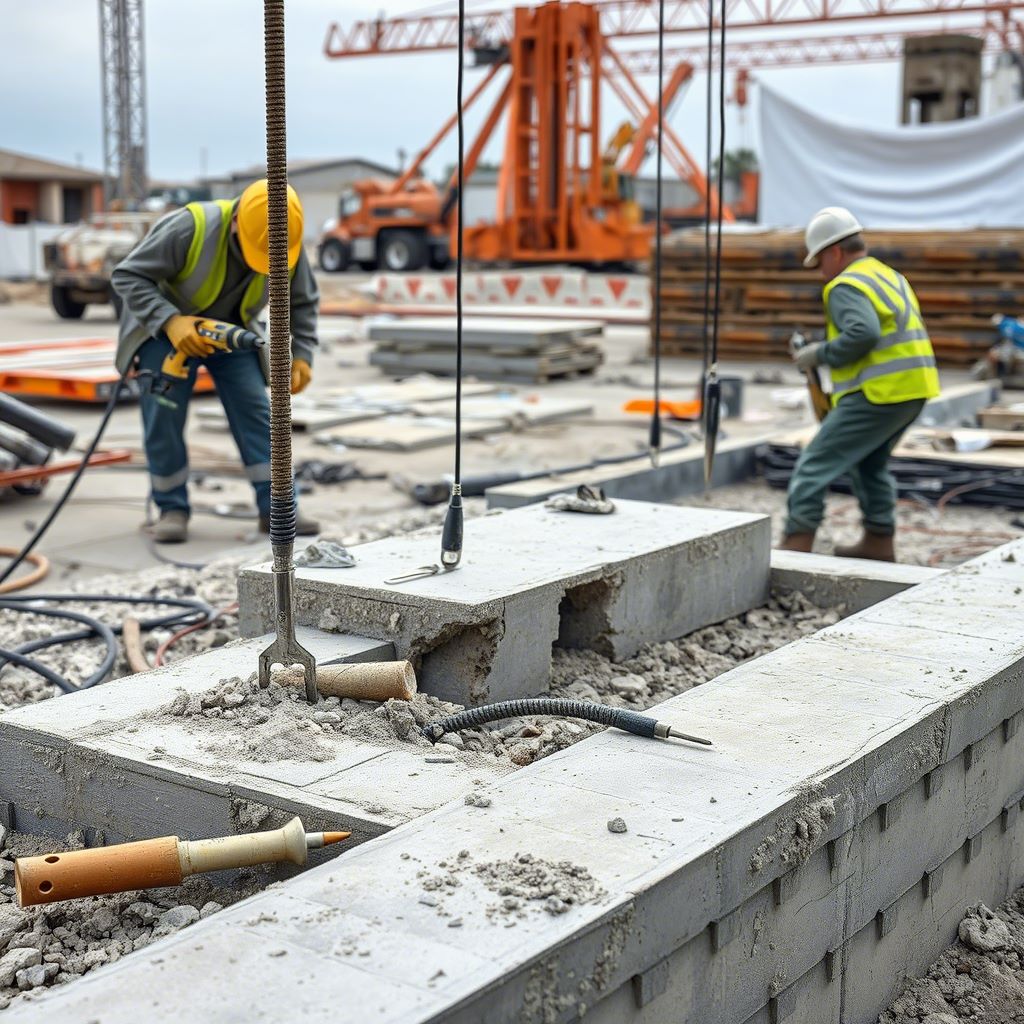
Structural Repairs & Concrete Restoration
At DRS Aqua Engineers, we specialize in restoring the strength and integrity of damaged concrete structures. Our expert team identifies cracks, corrosion, and weakened areas, then uses advanced materials and techniques to repair and reinforce them. Whether it’s a residential building, commercial complex, or industrial structure, we ensure long-lasting durability and safety with minimal disruption.
Our Process:
At DRS Aqua Engineers, we follow a systematic and engineering-driven approach to restore damaged concrete structures. Here’s how we ensure strength, safety, and longevity:
Site Inspection & Damage Assessment
We begin with a detailed visual inspection and non-destructive tests to assess the extent of damage, cracks, corrosion, or structural weakness.
Surface Preparation
Damaged or loose concrete is carefully removed using mechanical tools.
Rusted reinforcement bars are cleaned and treated with anti-corrosion coatings.
Rebar Strengthening (if required)
Additional steel reinforcement is added, or carbon fiber wrapping is used for structural strengthening.
Crack Injection & Grouting
Fine cracks are sealed using epoxy or cementitious grouts.
For deeper cracks or voids, pressure grouting ensures full bonding and integrity.
Concrete Restoration
High-strength polymer-modified repair mortars are applied to rebuild and reshape the damaged areas.
Surfaces are leveled and finished for structural and aesthetic recovery.
Protective Coating & Waterproofing
Final protective coatings or waterproof layers are applied to prevent future damage from water ingress, weather, or chemicals.
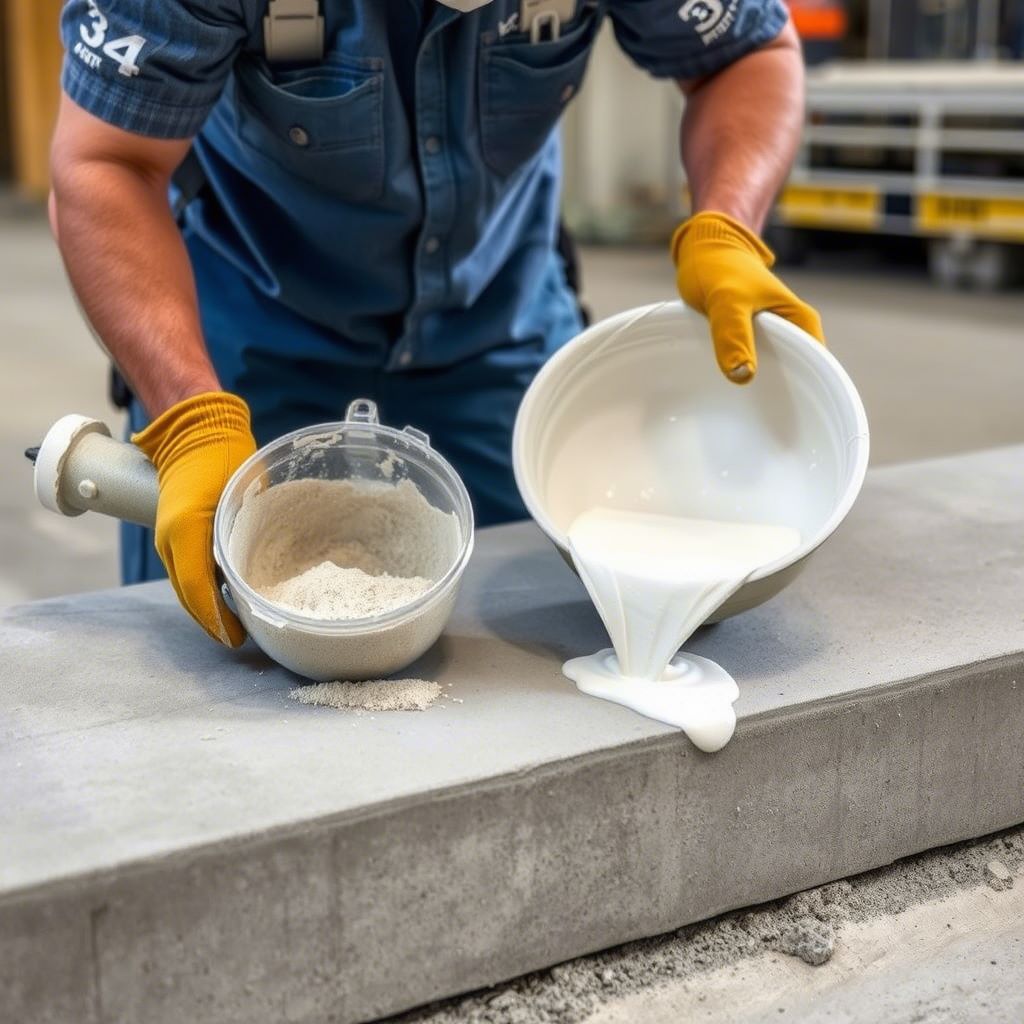
Cementitious & Epoxy Grouting
At DRS Aqua Engineers, we offer expert cementitious and epoxy grouting services to seal cracks, fill voids, and strengthen concrete structures. These grouting methods are essential in repairing leakages, increasing structural integrity, and extending the life of concrete elements in buildings, basements, tanks, podiums, and more. Our team ensures precise material selection based on the location, severity, and structural need.
⚙️ Our Process for Cementitious & Epoxy Grouting
We follow an industry-standard, result-oriented process to deliver long-lasting grouting solutions:
Inspection & Crack Mapping
Cracks and leakage zones are identified, categorized (active/passive), and mapped for grouting treatment.
Surface Preparation & Drilling
Small holes or ports are drilled along the crack lines or voids to prepare for injection.
The surface is cleaned of dust, oil, and loose particles for proper bonding.
Grouting Material Selection
Cementitious grout is used for wide cracks and void filling where flexibility isn’t needed.
Epoxy grout is selected for narrow structural cracks requiring high strength and bonding.
Injection Process
Using manual or pressure grouting machines, the grout is injected through nozzles until the voids are filled.
For epoxy grouting, low-viscosity resins are pressure-injected to penetrate fine cracks.
Curing & Sealing
After grouting, curing is done as needed, and the surface is sealed to prevent future water ingress.
Final Inspection
Post-grouting inspection ensures the structural area is dry, restored, and leakage-free.
✅ Why Choose DRS Aqua Engineers?
Precise material usage based on structural needs
Experienced technicians and advanced grouting tools
Long-term solution for cracks, leaks, and structural weakness
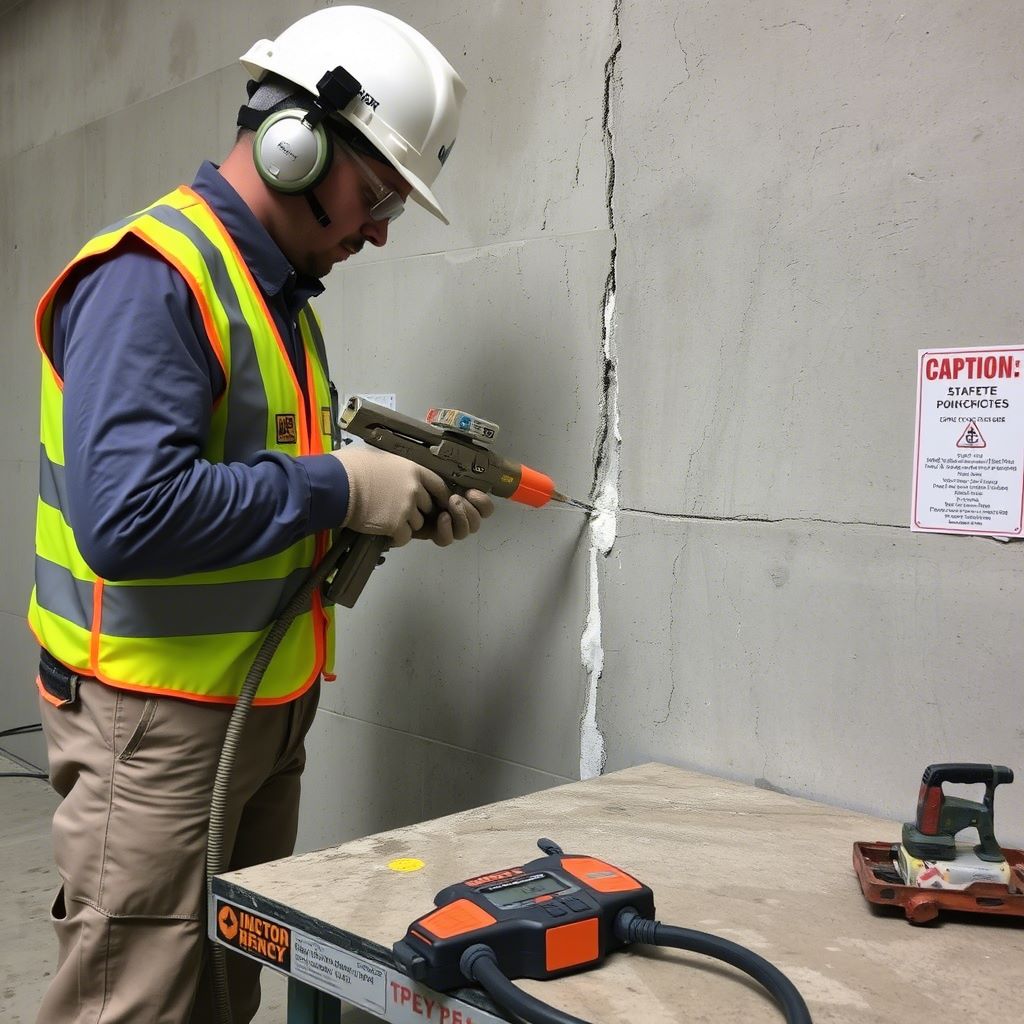
PU (Foam & Gel) Injection Grouting
DRS Aqua Engineers offers specialized Polyurethane (PU) Injection Grouting—both foam and gel types—for active water leakage control in concrete structures. This technique is highly effective in sealing wet cracks, joints, basements, tunnels, lift pits, and underground structures, where conventional grouting methods may fail.
PU grouting reacts quickly with water to expand and form a flexible, water-tight seal that permanently blocks further ingress, making it ideal for emergency water stoppage and long-term protection.
⚙️ Our Process for PU (Foam & Gel) Injection Grouting
We follow a strategic and results-oriented process to ensure complete leak sealing:
Leak Source Identification
We begin with a detailed inspection to locate the source of water ingress and assess the nature of cracks or voids.
Port Installation & Surface Prep
Holes are drilled along crack lines or leak zones.
Injection ports (packers) are installed, and the surface is cleaned for optimal adhesion.
Material Selection
PU Foam is used for fast-expanding action where active water flow is present.
PU Gel is selected for fine cracks, where deep penetration and flexibility are required.
High-Pressure Injection
Using professional PU injection pumps, the resin is injected under pressure.
The material expands and reacts with water to seal cracks from the inside out.
Reaction & Seal Formation
PU foam rapidly expands and hardens to form a water-tight seal.
PU gel remains flexible, allowing movement in expansion joints or settlement areas.
Finishing & Testing
After curing, the injection ports are removed, and the surface is patched.
A final inspection ensures the area is completely leak-free and restored.
✅ Why Trust DRS Aqua Engineers for PU Grouting?
Proven success in severe water seepage control
Use of premium-grade PU materials
Highly trained team with advanced injection systems
Fast, durable, and non-invasive solution for wet conditions
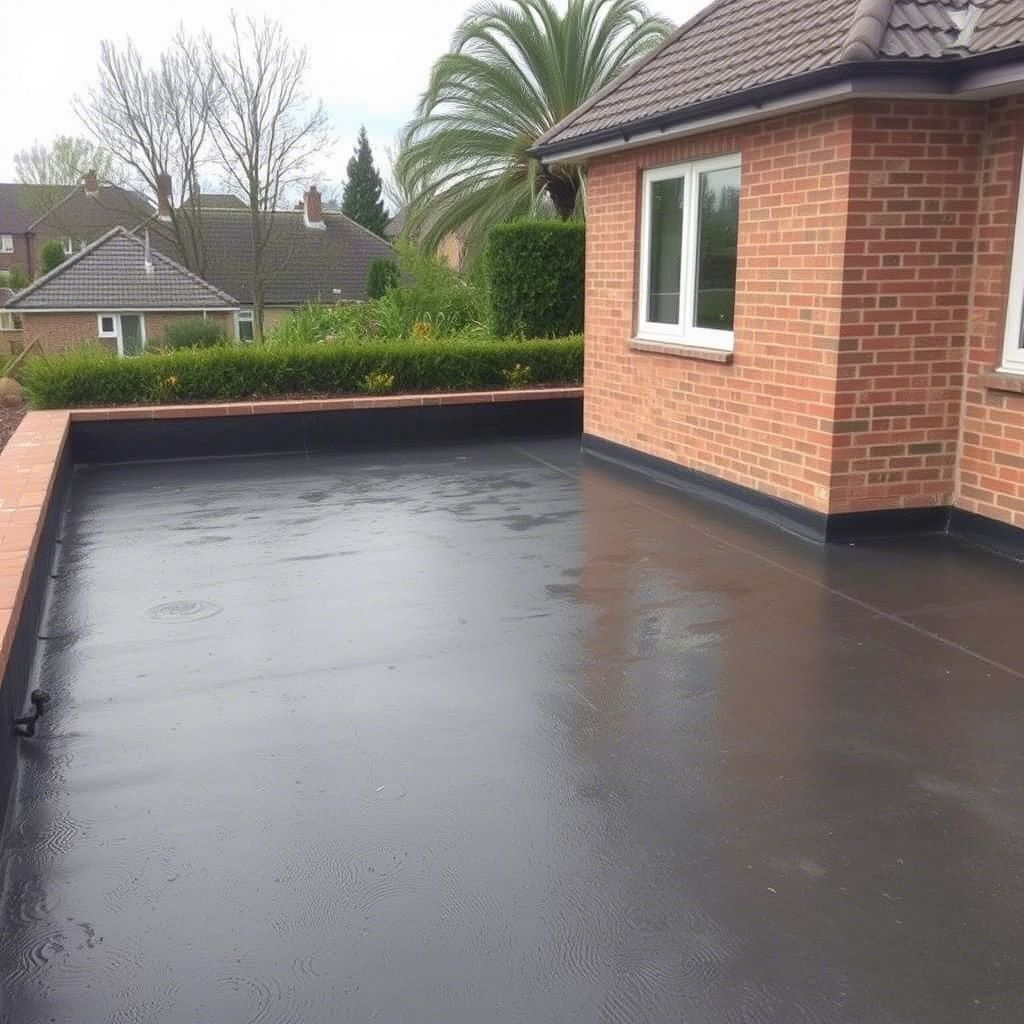
Membrane Waterproofing
At DRS Aqua Engineers, we provide expert membrane waterproofing solutions for terraces, podiums, basements, bathrooms, and water-retaining structures. Membrane waterproofing involves applying a protective, seamless, and elastic barrier over surfaces to prevent water infiltration.
We offer a variety of membranes including bituminous, liquid-applied, torch-on, and PVC membranes, based on the specific needs of the site. This system ensures long-term durability, UV resistance, and protection even in extreme conditions.
⚙️ Our Process for Membrane Waterproofing
We follow a precise step-by-step process to ensure reliable and leak-proof results:
Surface Preparation
The surface is cleaned thoroughly and made free from dust, grease, and loose particles.
Undulations or cracks are repaired to ensure a smooth base.
Primer Application
A compatible primer is applied to improve the bonding between the substrate and the waterproofing membrane.
Membrane Installation
Depending on the site requirement, we use:Torch-on Bitumen Membranes (heat applied for strong adhesion)
Self-adhesive membranes for sensitive surfaces
Liquid-applied membranes (brushed, rolled, or sprayed for seamless finish)
Overlaps & Detailing
Joints, overlaps, and corners are sealed meticulously to ensure no water paths are left open.
Extra reinforcement is added at critical points like wall junctions, pipes, and drains.
Protection Screed or Tiling (if required)
For exposed areas or areas with foot traffic, a protective screed or tile layer is added over the membrane for durability.
Inspection & Testing
Water ponding or flood testing is done to ensure complete sealing before handing over.
✅ Why Choose DRS Aqua Engineers for Membrane Waterproofing?
Multiple membrane options tailored to site needs
Highly skilled application team
Long-term protection with weather and chemical resistance
Perfect for rooftops, basements, tanks, and wet areas
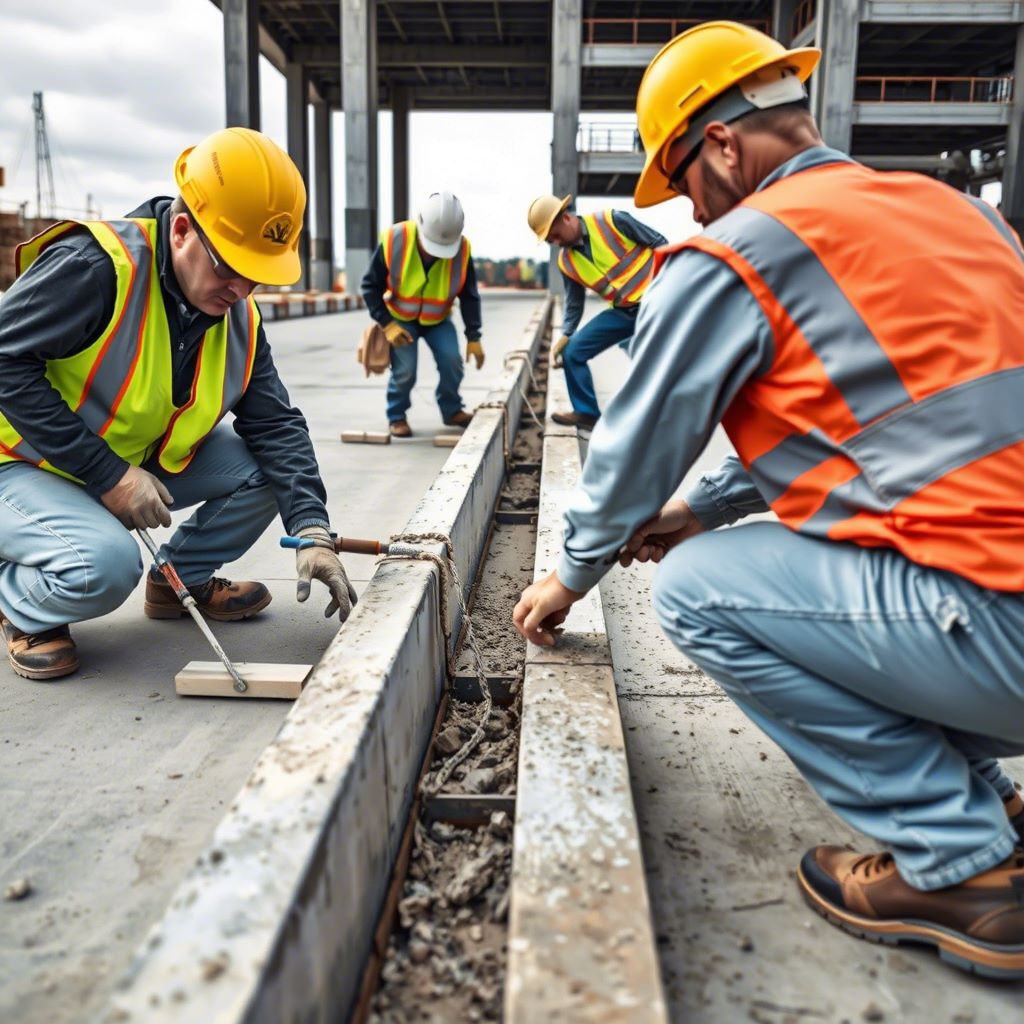
Expansion Joint Sealant Applications
DRS Aqua Engineers specializes in professional Expansion Joint Sealant Applications to prevent water ingress, structural movement damage, and material failure. Expansion joints are critical gaps in buildings and infrastructure that allow movement due to temperature changes, vibrations, or settling. If not properly sealed, these joints can become weak points for leakage and structural deterioration.
We apply high-performance elastomeric sealants (like polyurethane, polysulfide, or silicone-based materials) that remain flexible and provide long-lasting waterproofing and flexibility—even in dynamic environments like rooftops, podiums, parking decks, and basements.
⚙️ Our Process for Expansion Joint Sealant Application
Our systematic process ensures durable protection and flexibility for your expansion joints:
Joint Inspection & Measurement
We assess joint size, movement range, and surrounding surface conditions to choose the right type of sealant.
Surface Cleaning & Preparation
The joint is cleaned of dust, debris, and old sealant.
The edges are prepared to ensure maximum adhesion.
Backer Rod Installation
A compressible backer rod is inserted into the joint to control the depth of the sealant and provide a base for bonding.
Primer Application (if needed)
A bonding primer is applied to the joint surfaces depending on substrate and sealant type.
Sealant Application
High-grade, flexible sealant is applied using a caulking gun or pump, ensuring full contact with joint walls.
We use polysulfide, polyurethane, or silicone sealants based on the structural needs and exposure conditions.
Finishing & Curing
The sealant is tooled to smooth the surface and shape it for water drainage.
The area is allowed to cure for optimal performance.
✅ Why Choose DRS Aqua Engineers for Expansion Joint Sealing?
Expertise in handling expansion joints in complex structures
Use of industry-certified sealants with long life and weather resistance
Clean, neat, and durable finish with precision application
Customized solutions for residential, commercial, and industrial structures
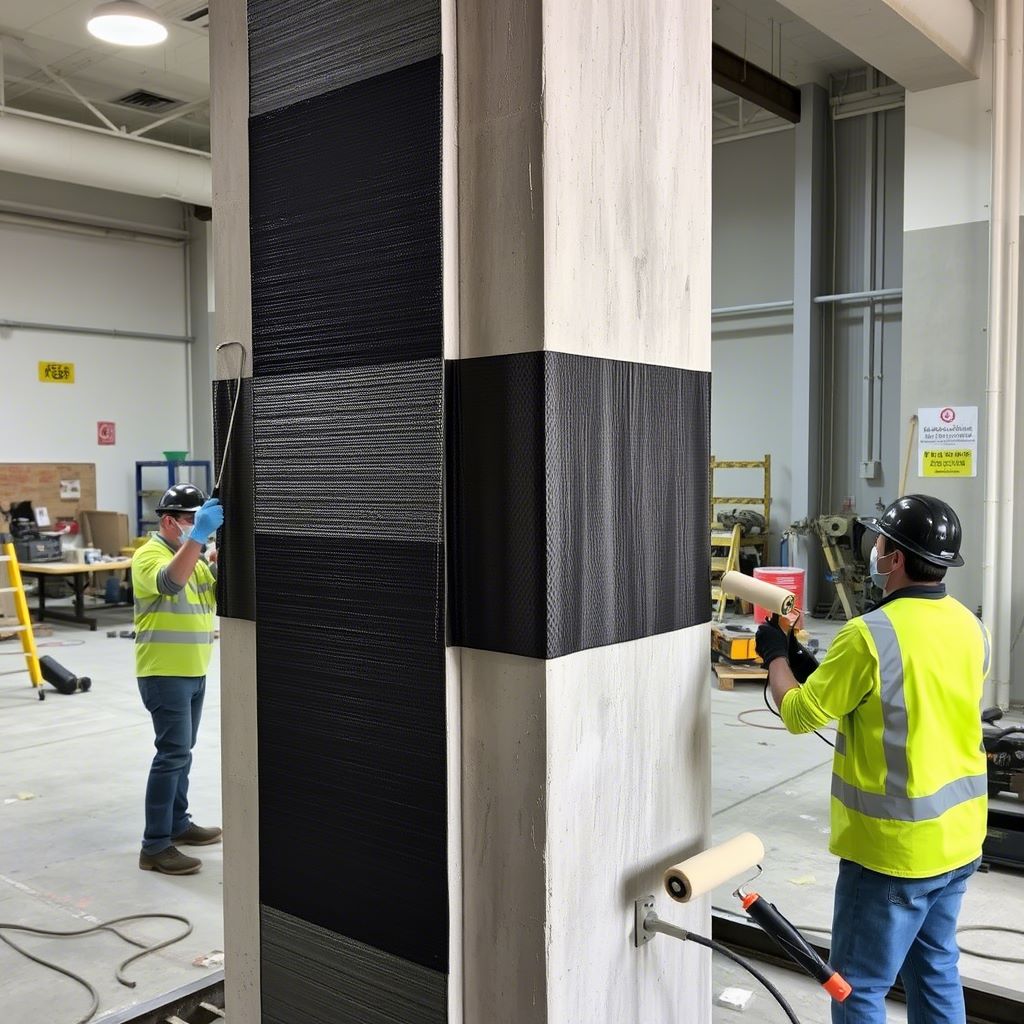
Column & Beam Strengthening
At DRS Aqua Engineers, we provide specialized column and beam strengthening services to enhance the load-bearing capacity and durability of existing concrete structures. This service is essential for aging buildings, structural modifications, load changes, or post-damage reinforcement.
We use advanced techniques such as steel jacketing, fiber-reinforced polymer (FRP) wrapping, and section enlargement to strengthen critical load-bearing elements without major demolition. Our methods are fast, reliable, and comply with modern structural safety standards.
⚙️ Our Process for Column & Beam Strengthening
We follow a structured and engineering-backed process to ensure structural stability and safety:
Structural Assessment & Diagnosis
A thorough inspection and evaluation of columns and beams is conducted to determine existing strength, cracks, deflection, and corrosion.
Selection of Strengthening Technique
Based on structural analysis, we recommend one or a combination of the following:Steel Plate or Jacketing: For high-load-bearing enhancements
Carbon/Glass Fiber Wrapping (FRP): Lightweight, high-strength option for seismic zones
Concrete Jacketing or Section Enlargement: For severe damage or design upgradation
Surface Preparation
Concrete surfaces are cleaned, roughened, and any loose material is removed.
Damaged sections are repaired before strengthening begins.
Application of Strengthening System
Steel jackets or additional reinforcement bars are installed and anchored properly.
In case of FRP, resin-impregnated carbon/glass fiber sheets are wrapped tightly around the member.
Curing and Finishing
Strengthened sections are properly cured and finished for long-term durability.
Final quality check and load testing (if required) are done to confirm reinforcement success.
✅ Why DRS Aqua Engineers for Column & Beam Strengthening?
Customized solutions based on structural requirements
Use of premium materials like MAPEI, SIKA, FOSROC FRP systems
Minimal disruption to existing structures
Experienced engineers and skilled technicians
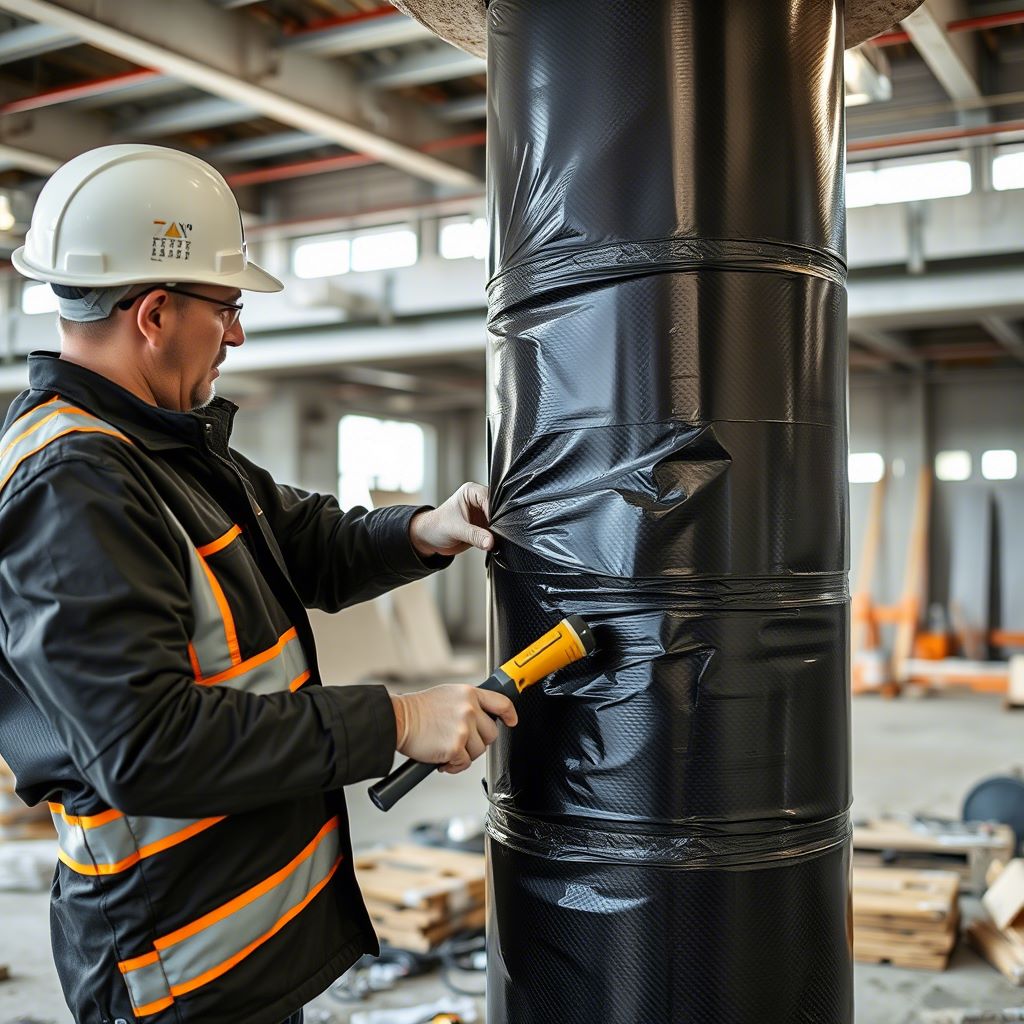
Carbon Fiber Wrapping
DRS Aqua Engineers offers high-performance Carbon Fiber Wrapping services to strengthen and retrofit structural elements like columns, beams, slabs, and walls. This modern technique uses carbon fiber-reinforced polymer (CFRP) sheets, which are lightweight, flexible, yet stronger than steel.
Ideal for seismic upgrades, structural retrofitting, or increasing load capacity, carbon fiber wrapping delivers exceptional strength without adding significant weight or bulk. It’s a non-invasive, durable, and corrosion-resistant solution widely used in residential, commercial, and industrial structures.
⚙️ Our Process for Carbon Fiber Wrapping
We follow an advanced, precision-engineered approach to ensure optimal results and structural reinforcement:
Structural Analysis & Suitability Check
Our engineers inspect the structure, determine the stress zones, and assess whether CFRP wrapping is the best-fit solution.
Surface Preparation
The concrete surface is cleaned, roughened, and repaired for cracks or damages.
Any contaminants, dust, or laitance are removed to ensure proper bonding.
Primer & Epoxy Application
A bonding primer is applied first.
High-performance epoxy resin is spread evenly over the prepared surface to act as an adhesive for the carbon fiber.
Carbon Fiber Sheet Wrapping
CFRP sheets are wrapped tightly around the structural element.
Multiple layers may be used depending on the required strength enhancement.
Roller Finishing & De-airing
Air bubbles are removed using rollers to ensure complete bonding between the sheet, resin, and substrate.
Curing & Final Inspection
The wrapped area is allowed to cure properly to achieve maximum tensile strength.
Final structural integrity checks are performed before handover.
✅ Why Choose DRS Aqua Engineers for CFRP Wrapping?
Expertise in applying MAPEI, FOSROC, and SIKA-approved CFRP systems
Non-disruptive to existing structures
Faster execution than traditional strengthening methods
Ideal for seismic zones, heavy load areas, and aged concrete repair
Frequently Asked Questions – DRS Aqua Engineers
What types of waterproofing services do you offer?
We offer a wide range of waterproofing services including terrace and roof waterproofing, basement waterproofing, bathroom and toilet leakage repair, membrane waterproofing, PU (foam & gel) injection grouting, and expansion joint sealing.
Which brands or materials do you use in your work?
We are authorized applicators for trusted brands like MAPEI, FOSROC, SIKA, PIDILITE (Dr. Fixit), BERGER, and Asian Paints SmartCare, ensuring high-quality and durable solutions.
What is the difference between cementitious and epoxy grouting?
Cementitious grouting is used for wider cracks and non-structural voids, while epoxy grouting is used for narrower cracks where structural bonding and strength are needed.
How long does waterproofing last?
When done with the right materials and technique, our waterproofing solutions can last 10 to 15 years or more, depending on site conditions and maintenance.
Do you provide a warranty for your services?
Yes, we provide a warranty of up to 10 years (depending on the type of service and materials used). All details are shared in the project proposal.
What is carbon fiber wrapping and when is it used?
Carbon fiber wrapping is a method of strengthening beams, columns, and slabs using high-strength, lightweight fiber sheets. It’s used for retrofitting, seismic strengthening, and structural upgrades without heavy demolition.
Can you work on running or active leakages?
Yes. Using PU (Polyurethane) foam or gel injection grouting, we can stop active leakages even in wet and water-logged areas like basements or lift pits.
How do you handle expansion joints in buildings?
We apply high-performance flexible sealants (PU, polysulfide, or silicone-based) into cleaned and prepared expansion joints to allow movement and prevent water ingress.
Are your services available outside Kolkata?
Yes, we operate across West Bengal, Odisha, Jharkhand, Bihar, and North-East India, depending on project size and scope.
How can I get a site inspection or quotation?
Just call us at 📞 9748766059 or email 📧 drsaquaengineers@gmail.com. Our technical team will schedule a site visit and provide a detailed quotation based on the inspection.
 Need a Waterproofing Service? Contact DRS AQUA ENGINEERS Today!
Need a Waterproofing Service? Contact DRS AQUA ENGINEERS Today! 
Book An Appointment
Send Free Inspection Request
